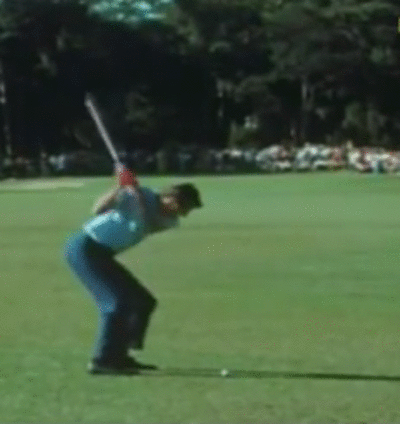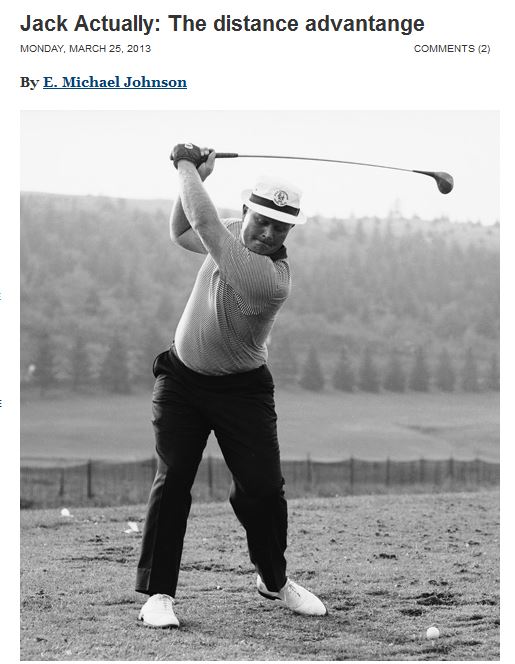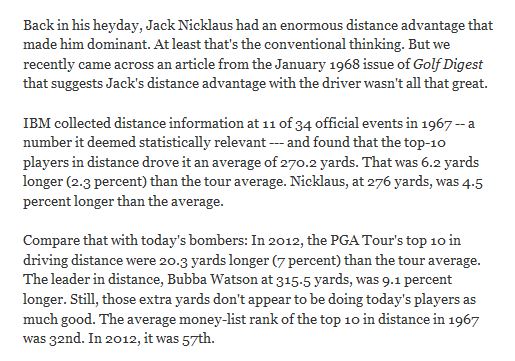Not surprising there.
After seeing Tiger pick up another win this week and regain #1 in the world, I’ve been thinking a lot about how technology has impacted his career. My first instinct, along with everyone else, is to think that the changes have done nothing but harm to Tiger. By leveling the playing field through the driver and (to some extent) the ball, lesser players have more of a chance to compete. In a field of 140 players, maybe 30 or 40 would have a legitimate chance of winning in the persimmon and blade era. Those outside of the top 40 players could still, on occasion, get hot and win, but most of the time they simply couldn’t compete against the top guys. In the modern game, though, a much larger percentage of the field is a factor every week. With less demanded of the players in terms of precision, winning becomes more about making lots of putts and getting a few fortuitous breaks on bad shots. This would harm the top players, who otherwise would have a bigger advantage over the mediocre players. Technology has homogenized the competition by bringing the bottom of the field closer to the top and minimizing the edge held by the best ball strikers. Call it redistribution of shot quality.
On the other hand though, I would argue that in a way, Tiger has benefited from the changes too. The driver and ball advances, in tandem with the venues chosen for tour events, have also homogenized the type of player who can win. With so little of a premium being placed on accuracy off the tee or from the fairway, anyone who hits it long has an enormous advantage. Short but precise hitters with great shotmaking ability are not rewarded by the modern game. For a player of below average length, excellent putting skills are needed in order to succeed in the modern game (Luke Donald). There’s not really any room for a Knudson or Hogan type who hits it perfect week in and week out but isn’t super long and is an average putter.
In any other era, the top handful of players all had distinct styles of play and, to some extent, physical characteristics. Hogan, Nelson, and Snead were all dominant forces in the 40’s and 50’s, but each had a different build and different approach to the game. Nicklaus and Trevino were very different from each other, but both succeeded at the highest level. Faldo and Norman were the same way. Today, these sorts of matchups are much more infrequent on tour. Sure, there are exceptions, but generally speaking, winners on tour now all hit it long and putt well. They don’t necessarily hit lots of greens, and rarely do they hit lots of fairways. It’s hard to imagine a young Corey Pavin faring well out there right now.
In this sense, the homogenization of golf has benefited Tiger to some degree. He’s got the right build to compete, hits it a long way, and putts well. Those attributes, combined with his experience and confidence, go a long way. For the most part, his only challenges are from the guys that fit the mold of long hitter and good putter. He doesn’t have to compete with the array of playing styles that could thrive on tour at one time. If he can be the best in a couple of key areas, he can dominate. There isn’t much downside to being a little wild off the tee if only distance is highly rewarded. If the courses were set up to reward distance and accuracy, he’d be in a much tougher position. If he sacrificed distance to gain accuracy, he’d compete better against the more accurate hitters, but give up an advantage to longer hitters. Likewise, if he gave up some accuracy in order to gain distance, he could keep up with the longer hitters, but would give an advantage to shorter but straighter hitters. Situations like these would force more players to improve their technique in order to maximize both distance and accuracy. The lack of these pressures to improve on tour today could help to explain the degradation of technique in the modern game.
Ideally, tournament golf would provide a fair test for all playing styles. Short hitters and long hitters could compete more fairly on a properly set up course. Unfortunately, the current tour schedule is set up to favor the Bubba Watsons and exclude the next generation of ball strikers.
This is all just speculative, but I think that a case could be made that the modern game has lessened the gap between average players (at the tour level) and the top players, but it has also eliminated certain playing styles from the competition. This homogenization of the playing field in terms of ability and approach to the game makes it much less satisfying to follow for those who are aware of what they’re missing out on.






